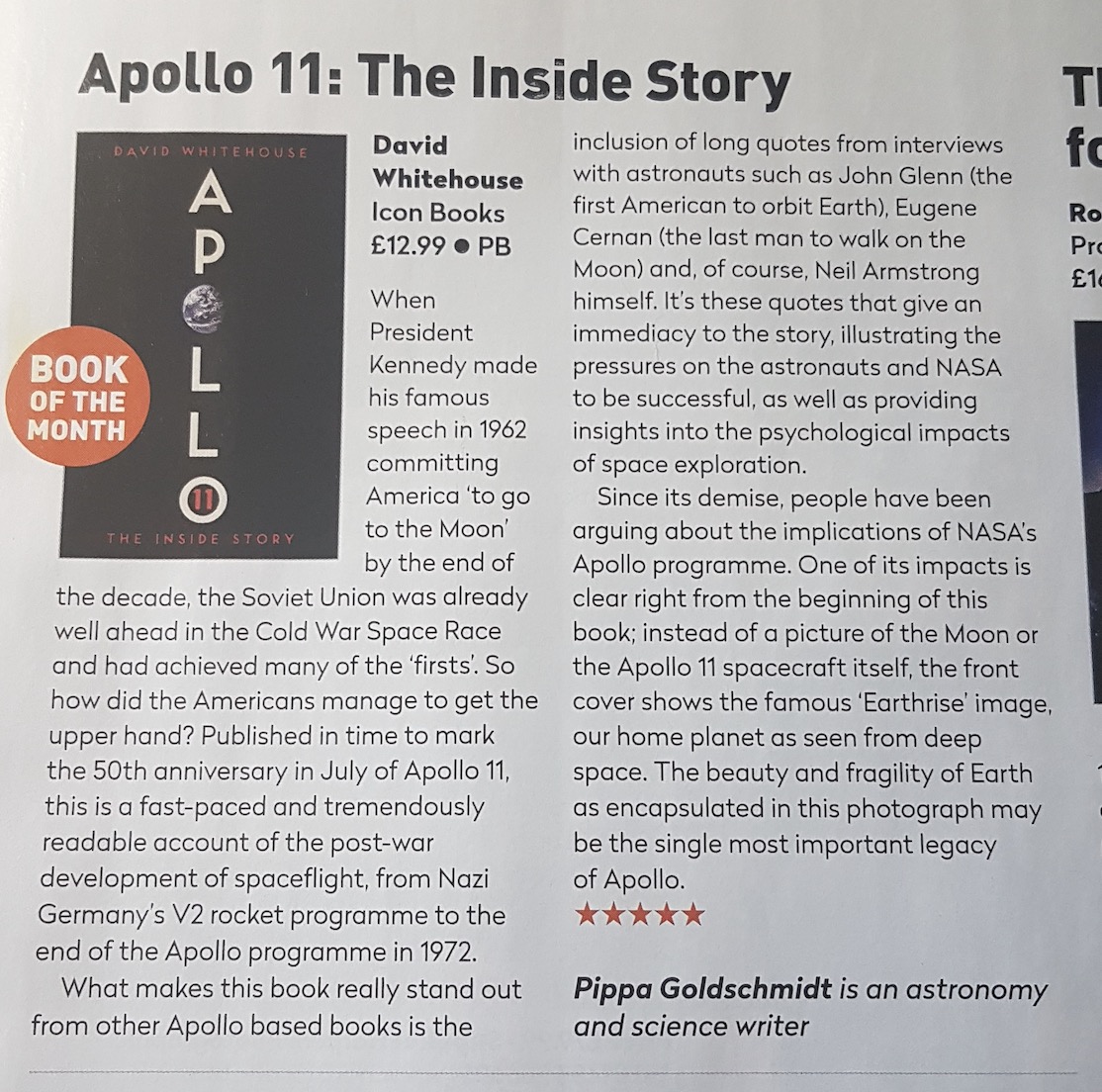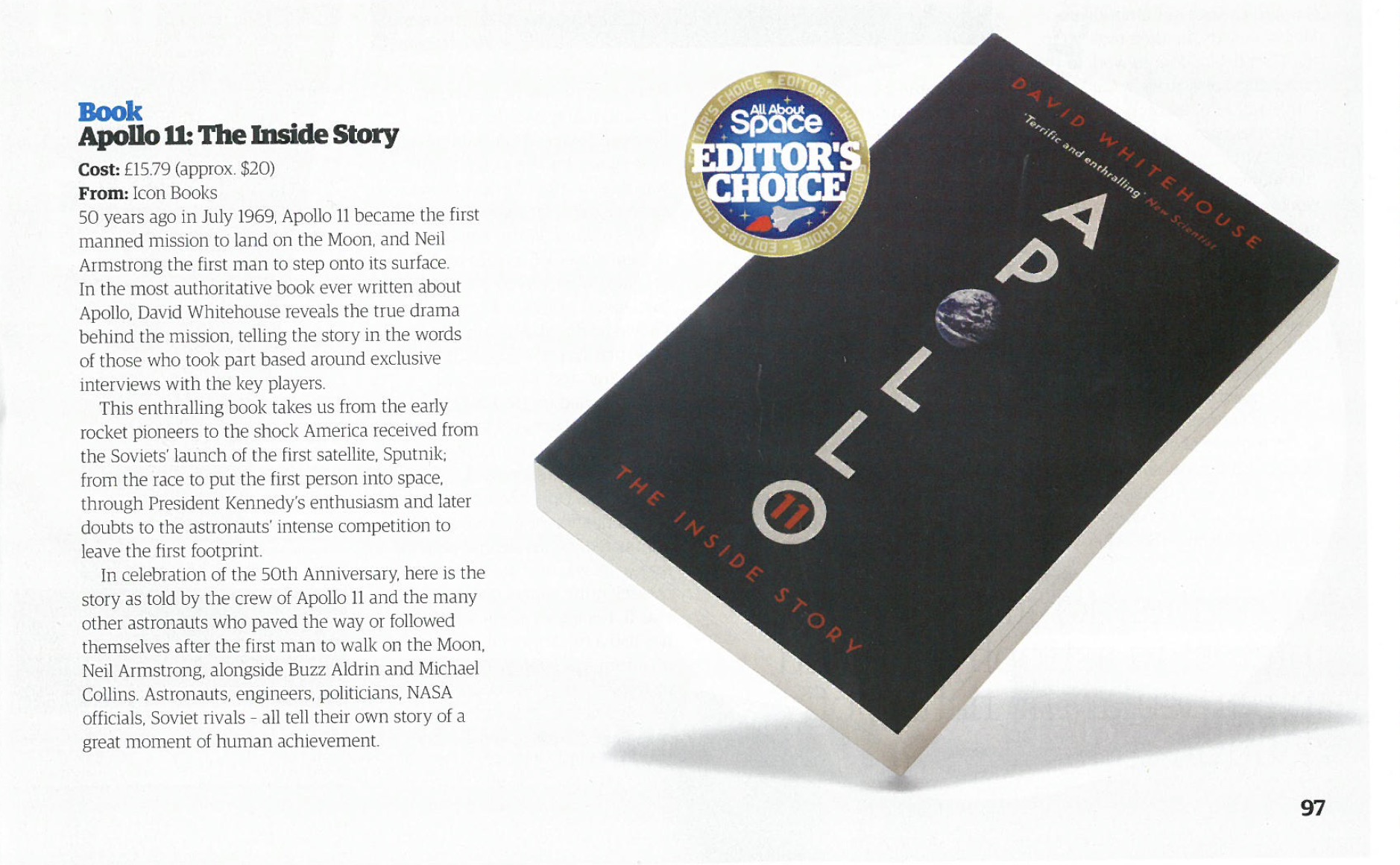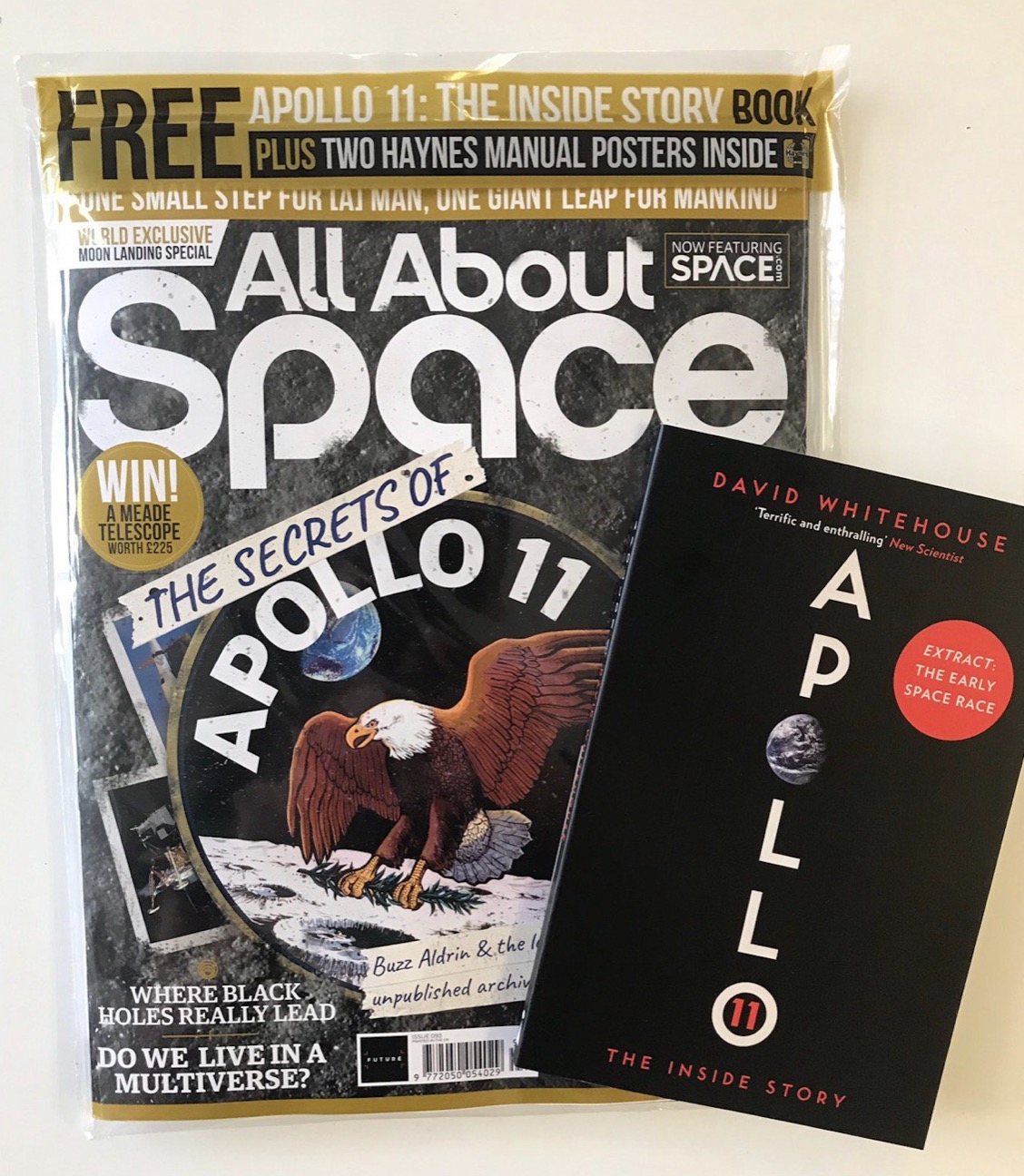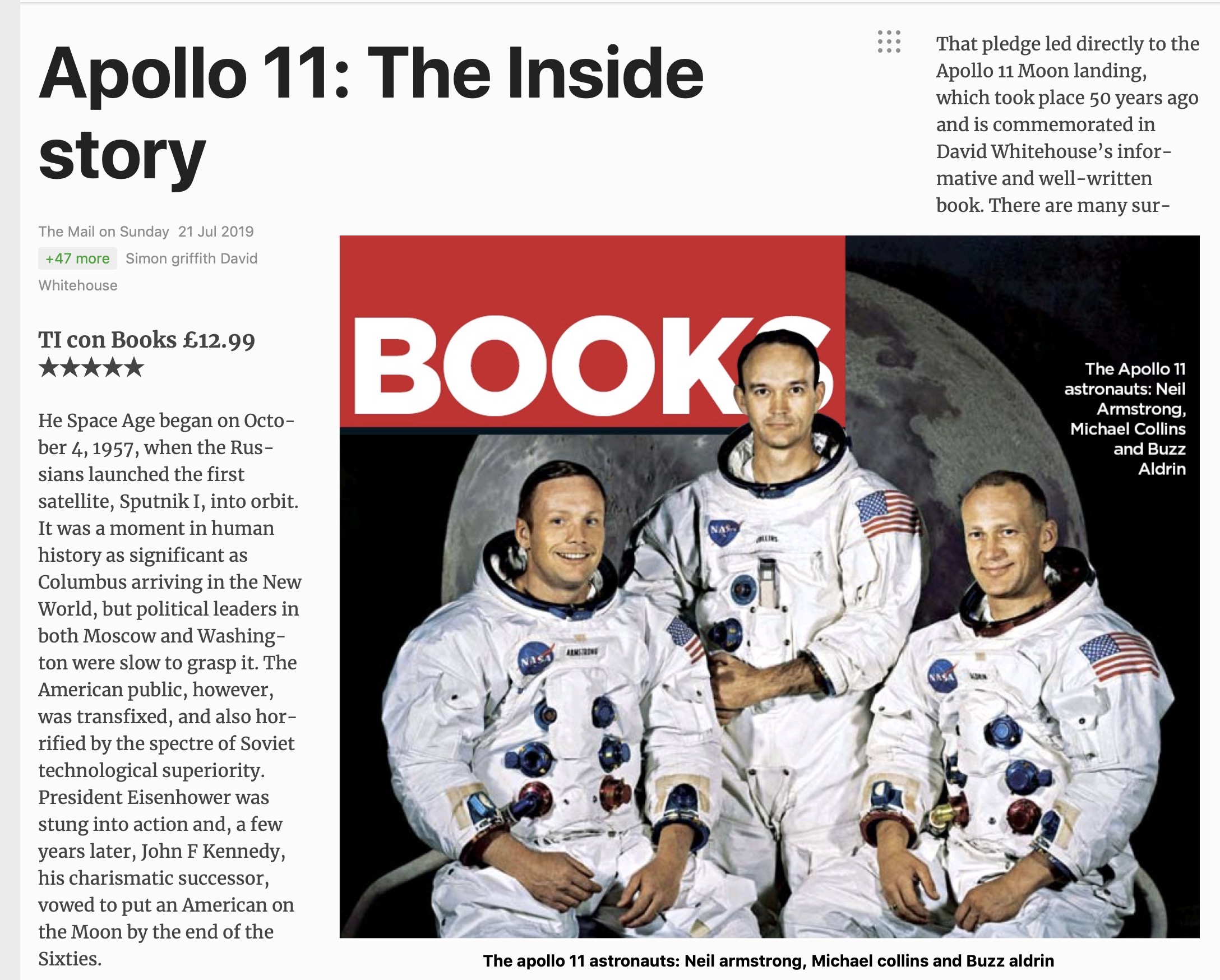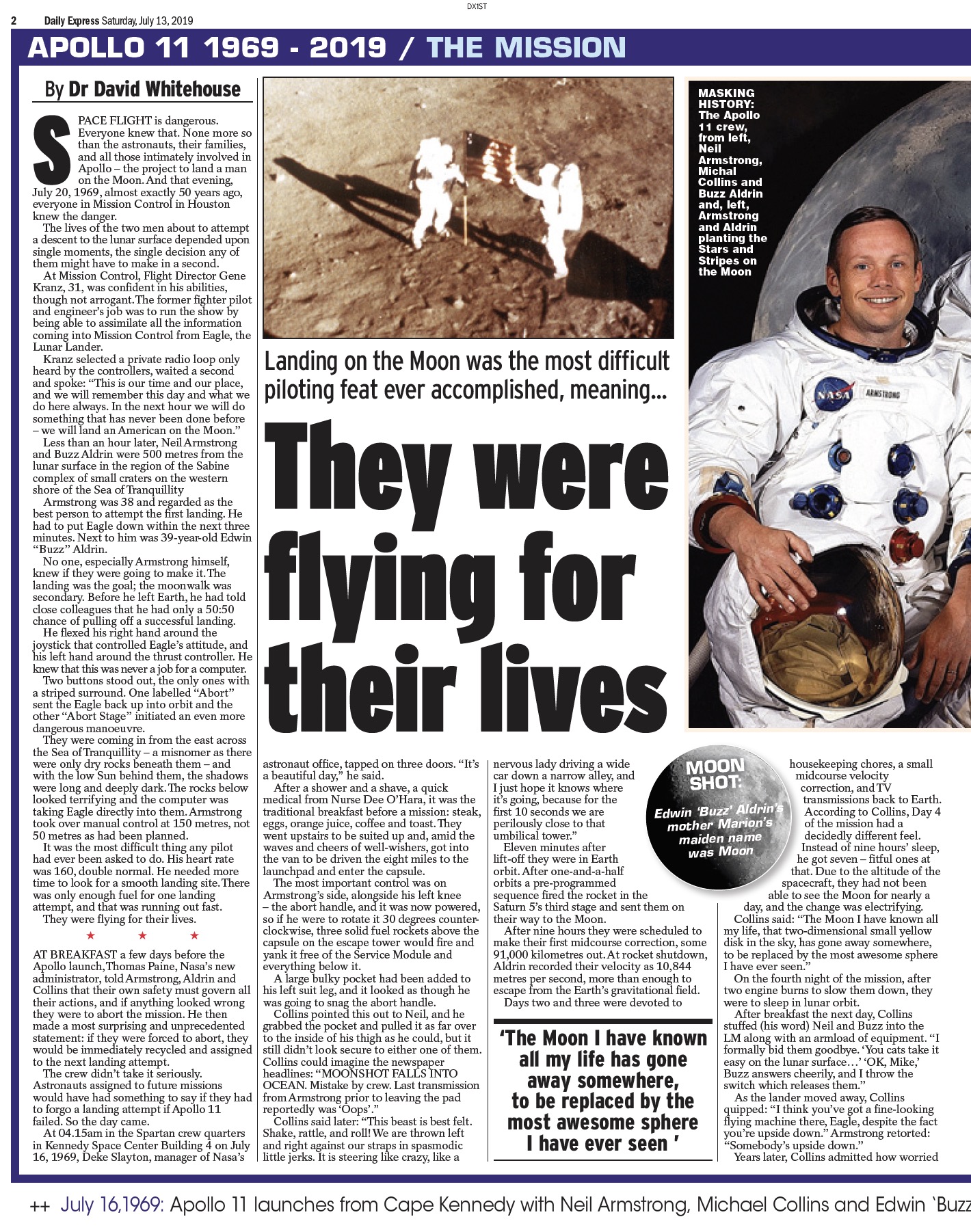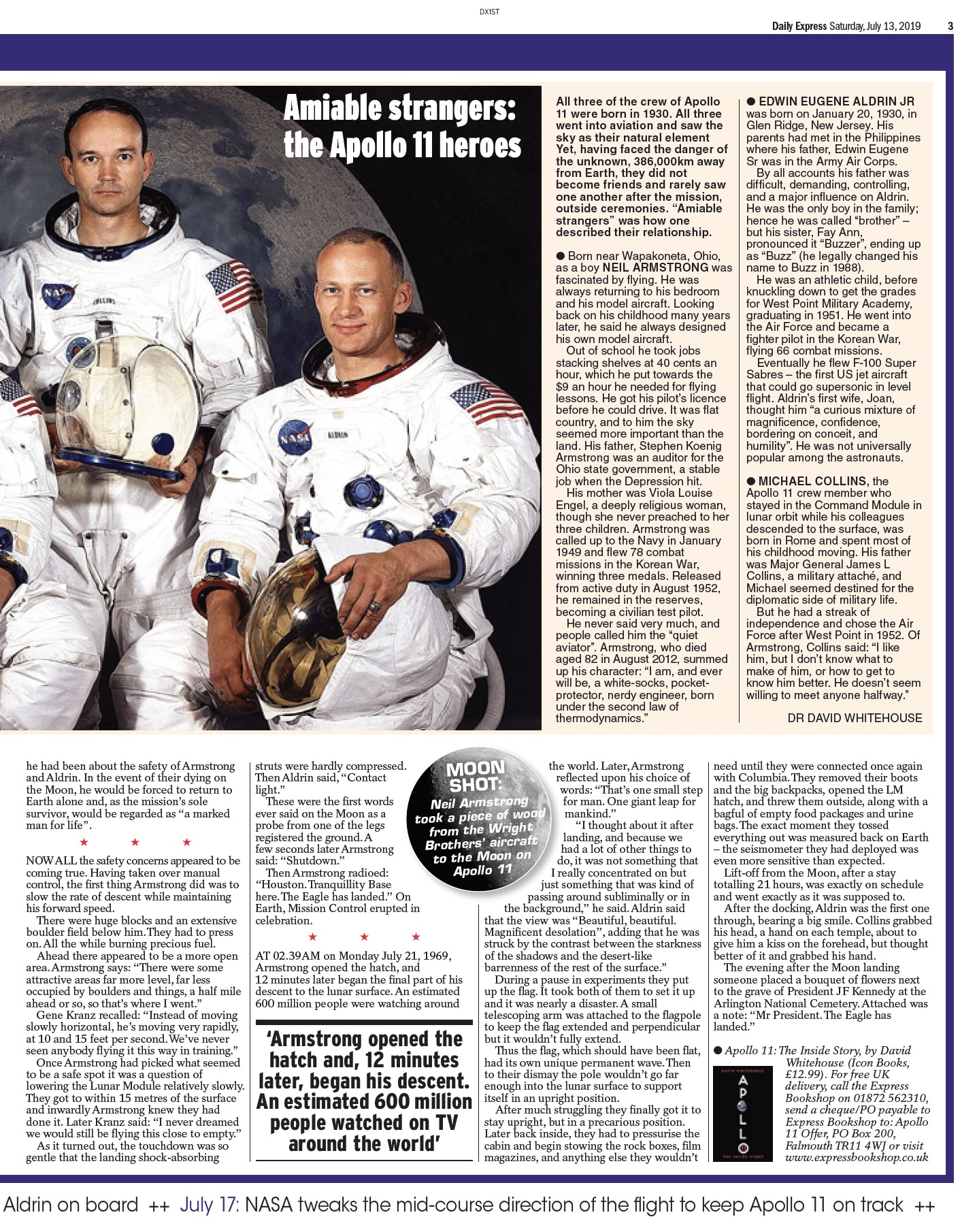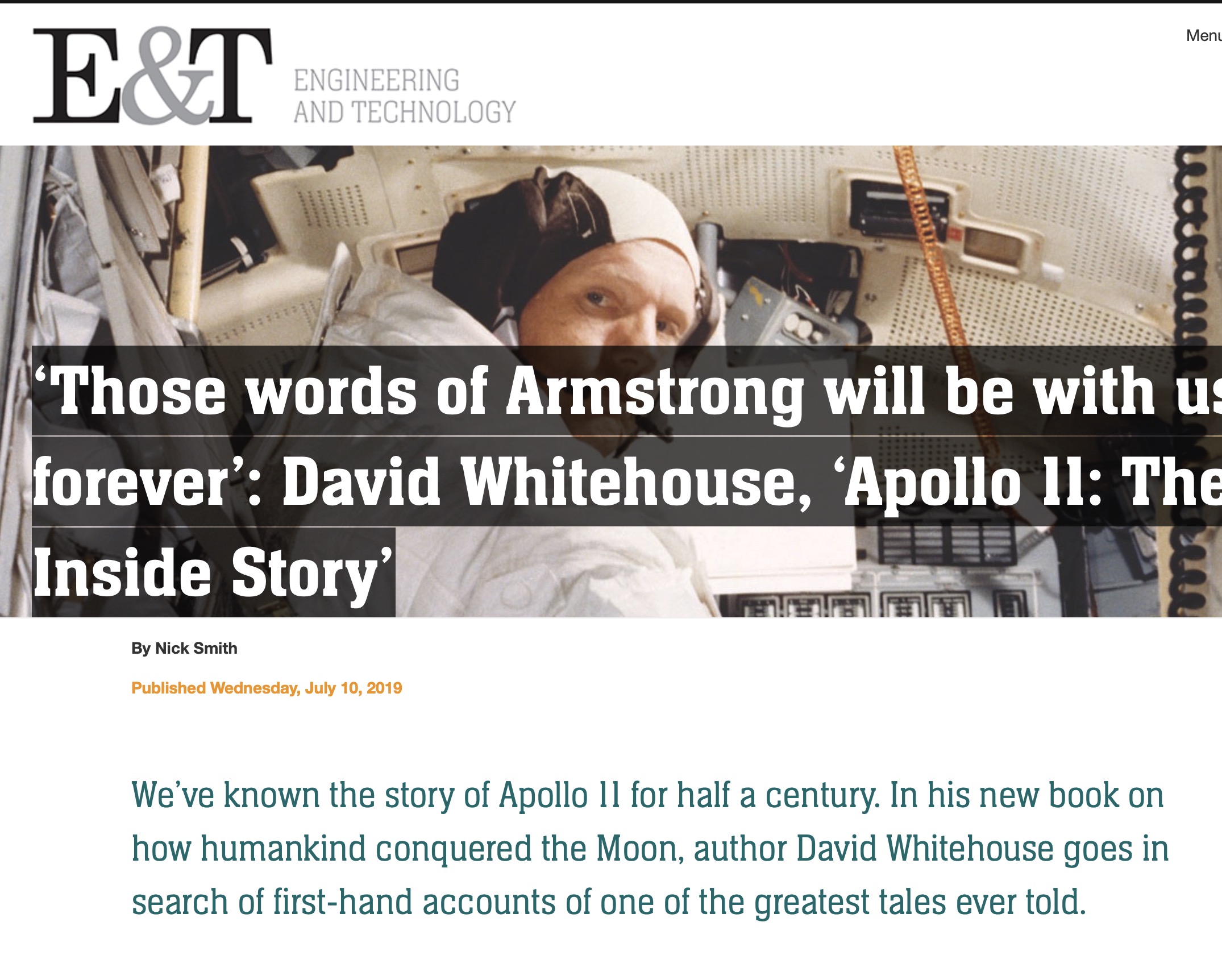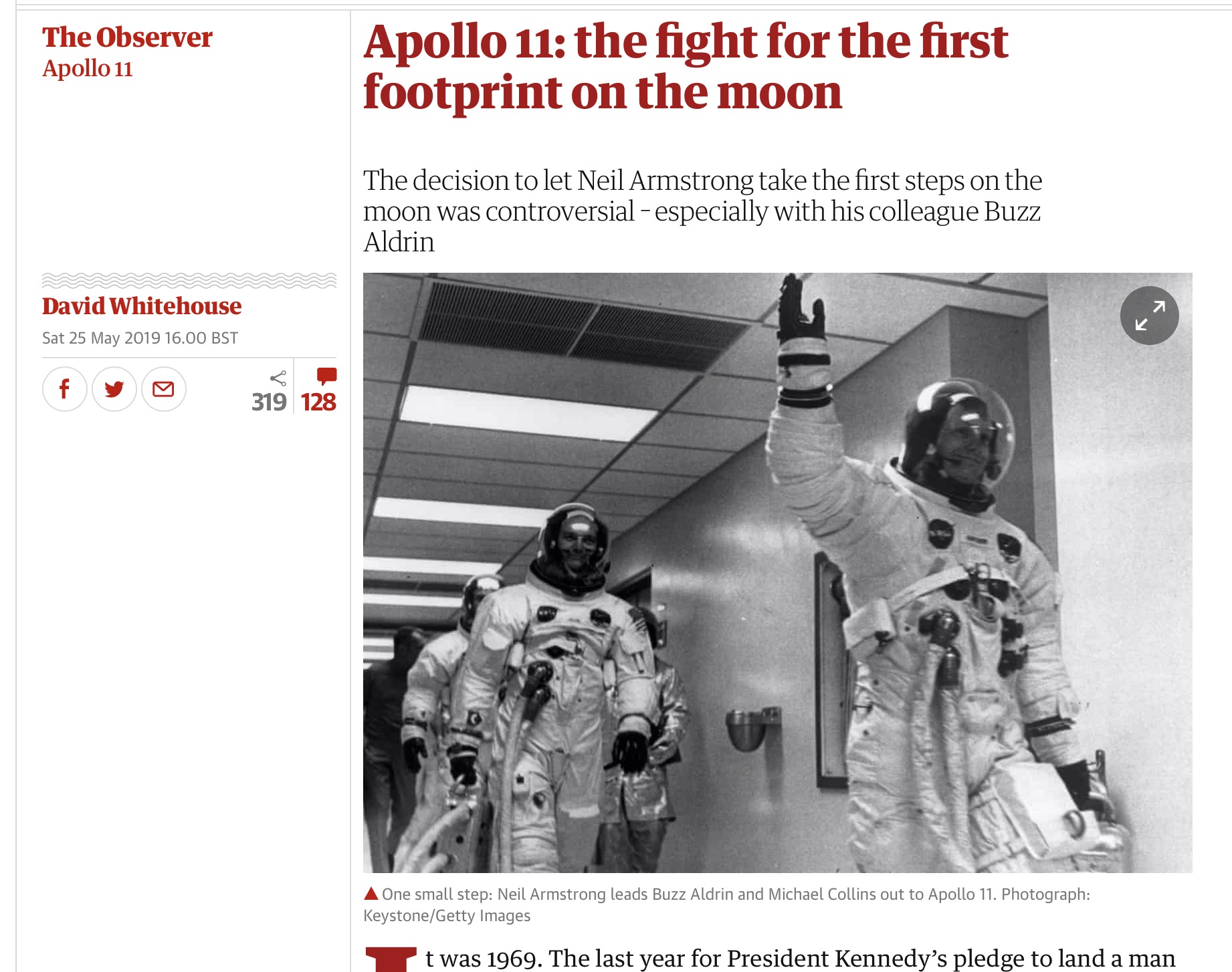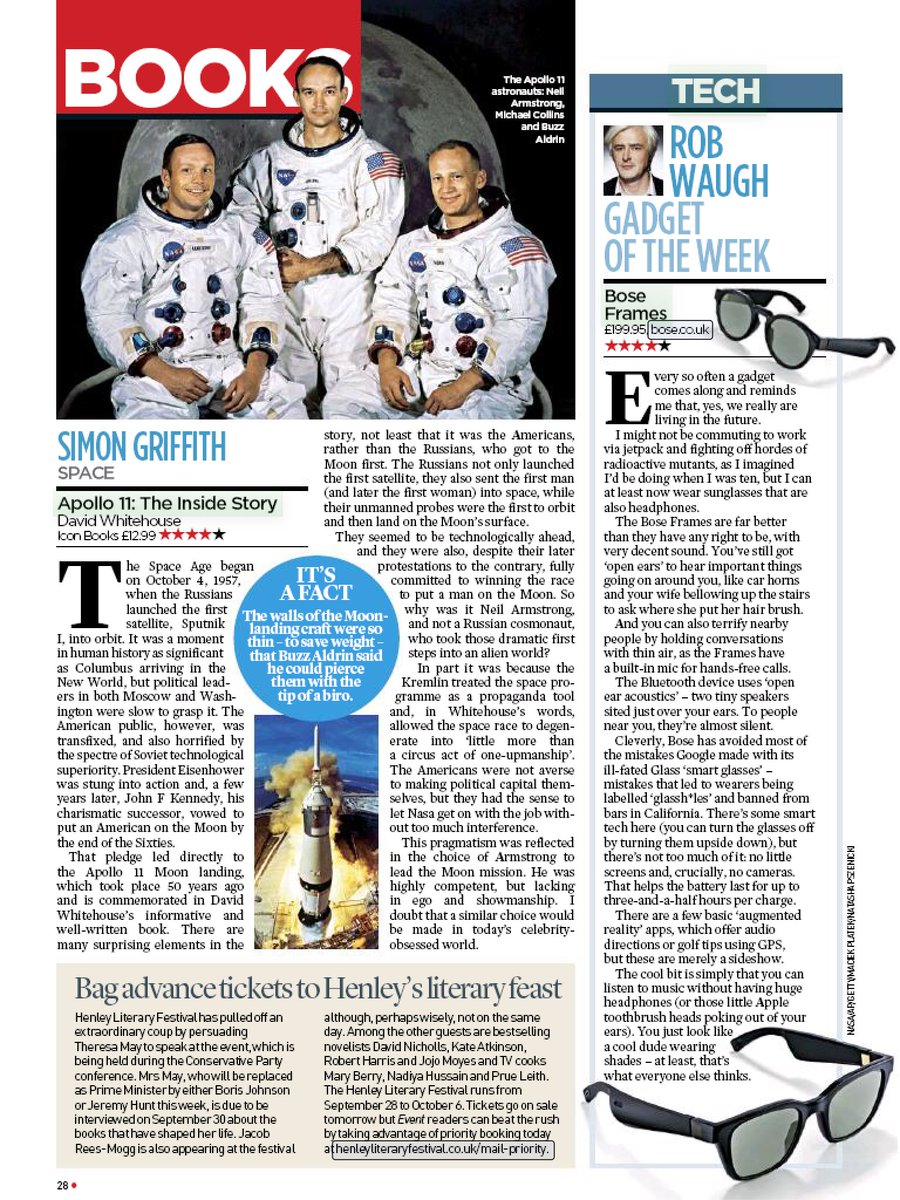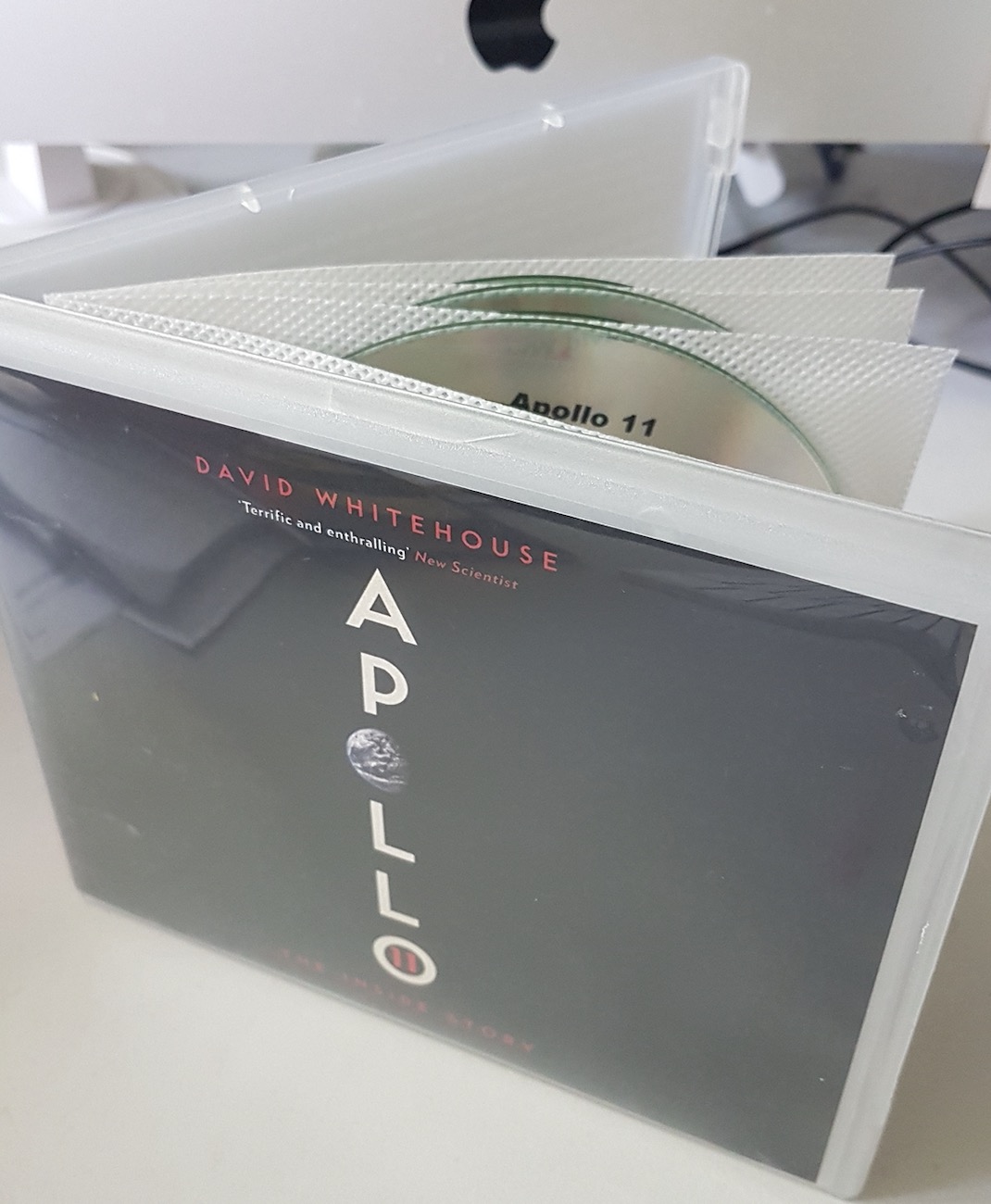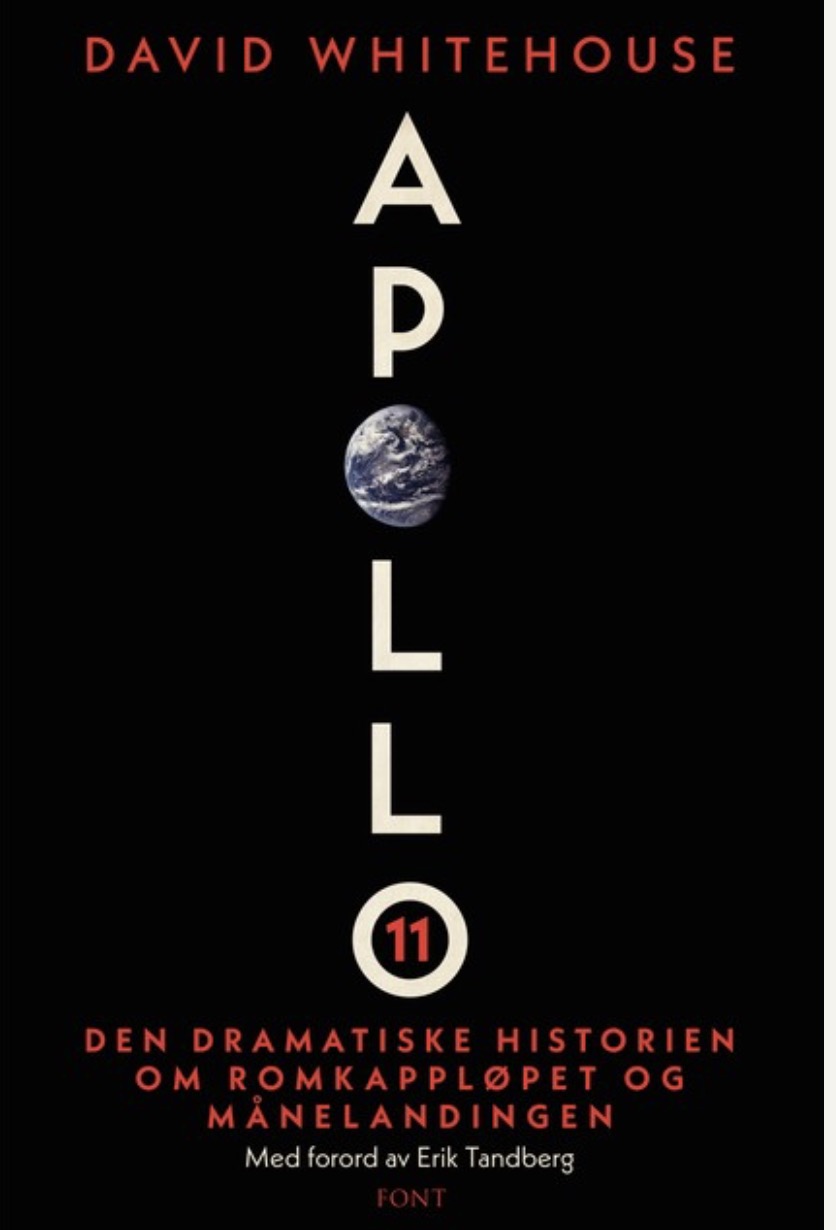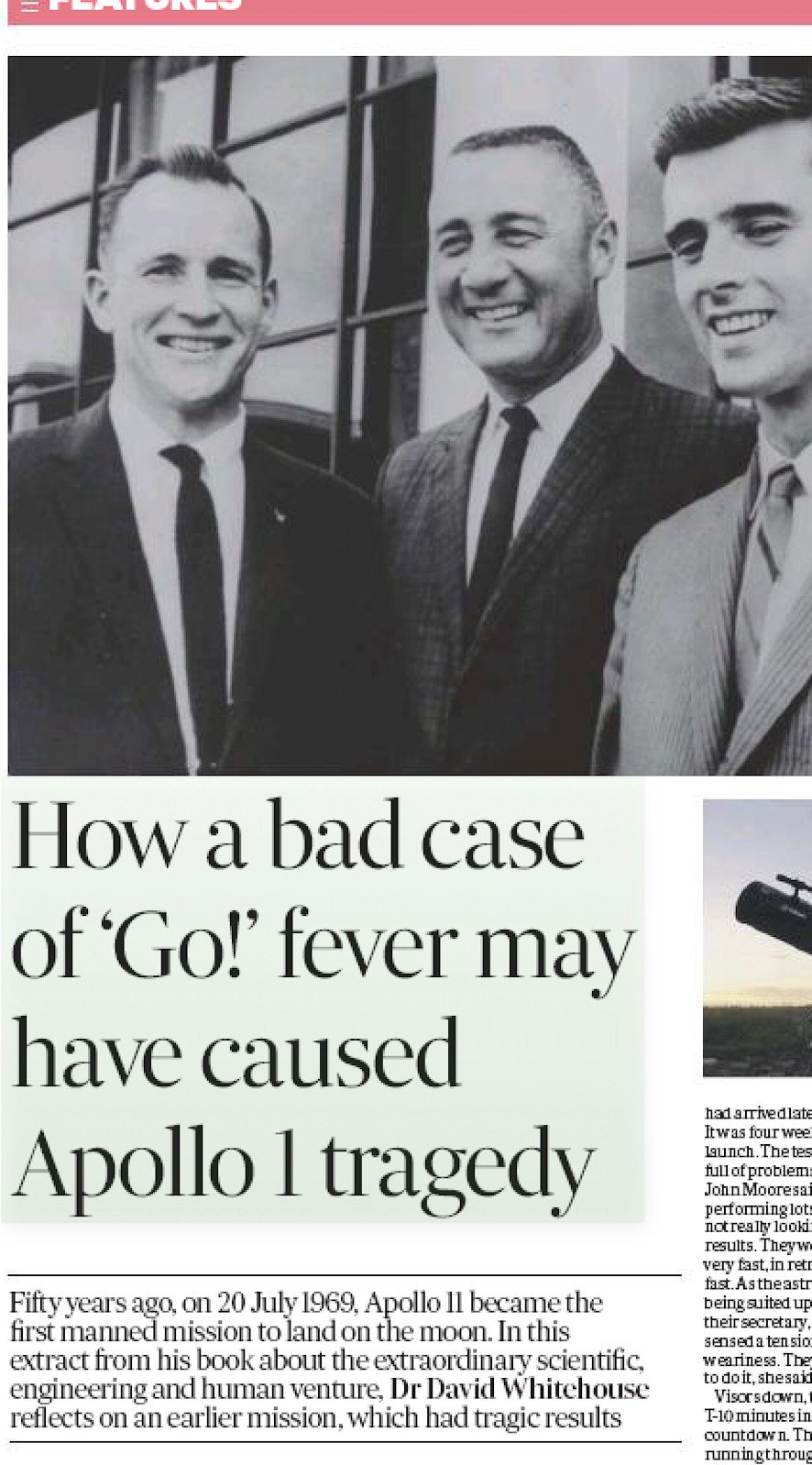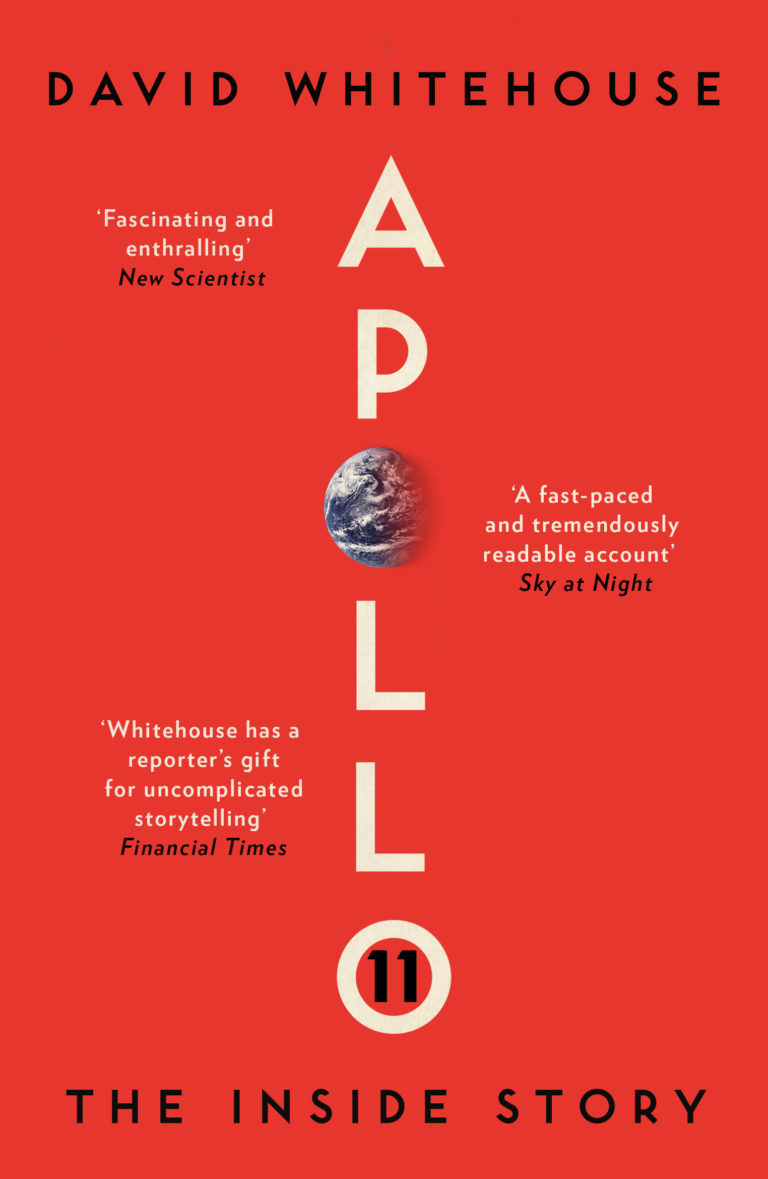The Spectator.
As the eleventh Apollo shot is now part of western folklore, and the 50th anniversary of man’s first landing on the Moon will be celebrated on 21 July, David Whitehouse’s masterly narration of what he calls ‘the inside story’ is profoundly gratifying. A former BBC science editor and correspondent, he provides implicit evidence that a nation can best undertake a leap of technological advancement when confronted with the threat of a major war.
In 1950, the Soviets were working on their own version of the V-2. Then, like the Americans, they were busy building intercontinental ballistic missiles, able to deliver atomic bombs. However, in 1957, attention was diverted even higher when a Sputnik, weighing less than 50 kilograms, was launched into orbit around the Earth. As Whitehouse points out, ‘the Space Age had begun’. President Eisenhower established the National Aeronautics and Space Administration (Nasa) the following year, briefed to send a man into space. But America was shocked again, in April 1961, when the Soviets launched Yuri Gagarin into Earth orbit.
President Kennedy responded immediately. In his State of the Union address in May that year he daringly committed the US to landing a man on the Moon by the end of the decade and bringing him safely back home. Whitehouse covers the technical history of 17 Apollo missions, from 1968 to 1972, and adds warmth by humanising the 29 astronauts involved, largely in their own words. The focus, of course, is on the crew of Apollo 11, Mike Collins, Buzz Aldrin and the commander, Neil Armstrong — the first man to set foot on the Moon, and so, as Whitehouse writes, ‘the most famous man on Earth’.
Kennedy died before the day of climactic success. But someone placed flowers on his grave in Arlington cemetery, and a note: ‘Mr President. The Eagle has landed.’
Financial Times.
A more forensic job on that pivotal disaster can be found in Apollo 11: The Inside Story by David Whitehouse. The fire started under Grissom’s seat, he explains, but “the documentation was so poor that no one was even sure what was within the spacecraft at the time of the accident”. Subsequent investigation found the capsule was a tinderbox: a pure oxygen atmosphere, among other things, meant that when a spark came, the men stood no chance. After the fire, Gene Kranz, Nasa’s flight director, instructed his staff to write a phrase on their blackboards: “Tough and Competent”. Tough, Kranz said, to mean that they were forever accountable for what they did or failed to do, and Competent to mean they would never take anything for granted. “Each day when you enter the room,” Kranz told them solemnly, “these words will remind you of the price paid by Grissom, White and Chaffee.” Meanwhile, as Nasa mourned its dead, the Soviets were recklessly shooting their best men into the sky on substandard rockets. A month after the Apollo 1 disaster, cosmonaut Vladimir Komarov died when the parachutes on his Soyuz capsule failed on re-entry and it crashed to Earth. Gagarin was originally scheduled to make the journey: his close friend Komarov, fearing that the launch might be a one-way trip, begged to go instead.
The Soviet space effort was masterminded by the Council for the Problems of Mastering the Moon, which showed an almost criminal disregard for cosmonaut safety: despite Komarov’s death, the Soviet leadership still wanted a space spectacular timed for November 1967, to mark the 50th anniversary of the October Revolution. That enthusiasm waned as news filtered through of Apollo success, particularly Apollo 8, which in 1968 became the first crewed mission to orbit the Moon and return (in a live broadcast, the crew recited passages from Genesis). Whitehouse, a former BBC science editor with several space books under his belt, has a reporter’s gift for uncomplicated storytelling, shuttling us back and forth between the USSR and the US as the two superpowers battle it out for cosmic (and political) supremacy. He shows convincingly how the more logical and systematic approach of the Americans eventually paid off.
Their rivalry in space depended heavily on their rocket men, whose expertise was vital to missile development. In the Soviet corner was Sergei Korolev, a gifted rocket scientist who survived a spell in a labour camp during Stalin’s purges. The US boasted Wernher von Braun, the German ex-Nazi inventor of the V-2 rocket, a trophy from the second world war. Both were scarred by conflict and driven by a passion for space. Whitehouse also finds room in a taut narrative to reveal something of the Apollo 11 personalities: Neil Armstrong, the calm, ego-free and popular civilian who Nasa selected as humanity’s first lunar ambassador; Buzz Aldrin, the tetchy, embittered air force colonel who felt that his rank entitled him to step out of the Eagle lander first.
Physics World.
“The most authoritative book ever written about Apollo” – that’s the bold claim on the back cover of my proof copy of Apollo 11 - The Inside Story especially when you consider the books written by some of the lunar astronauts themselves. But once you begin reading journalist and former BBC science broadcaster’s latest book, it won’t take long for that claim to fade from bold to fairly reasonable. Apollo 11 is a true celebration of what is inarguably one of humanity’s greatest achievement – setting foot on the Moon. The book tells the story through the voices of the people at the very heart of it – the US and Russian astronauts, as well as the administrators and politicians in both countries.
Whitehouse does not spend much time talking about the thousands of people behind the scenes – the engineers, physicists and mathematicians, those who made the spacesuits and spacecraft. Thankfully, however, their stories are finally being told elsewhere. Still, despite avoiding those tales, there is so much to pack in that the author doesn’t actually get to the surface of the Moon until the last quarter of the book, as the lunar module Eagle finally comes to rest in the Mare Tranquillitatis basin. By that point, you will be under no illusion as to how history had conspired, politicians had manoeuvred and astronauts had jockeyed for position, before Neil Armstrong and Buzz Aldrin set foot on that grey, alien surface.
Apollo 11 begins with the story of pioneering Russian rocket scientist Konstantin Tsiolkovsky, whose 1903 research paper “The exploration of cosmic space by means of reaction devices” is considered to be the first scientifically viable work exploring our ability to conquer space with rockets. Tsiolkovsky was a self-educated school teacher who imagined rockets fuelled by liquid oxygen and hydrogen, and developed the formula for rocket propulsion. He dubbed this the “formula of aviation”, which describes the relationship between the changing mass and velocity of a rocket, as it burns fuel. You will also read about Valentina Tereshkova, the first woman in space; find out about just how close Russia got to winning the so-called “space race”, and discover how many spacecraft accidentally crashed into the Moon before the Eagle was landed so deftly by Armstrong.
Inextricably intertwined with the majesty and awe of the feats of engineering and physics that were the Moon landings, is the sea of politics and war at the other end of what humanity is capable of. Whitehouse skilfully navigates these often-contradictory aspects of human nature. The author’s compelling style has been honed over years of writing for the BBC and his other books, but his voice here is relatively unheard. Instead, Whitehouse leaves most of the talking to the events that transpired and key players.
I particularly enjoyed hearing from John Glenn, the first American to orbit the Earth. Despite this honour, the journey involved him being stranded for an hour in his Friendship 7 space capsule on top of the Atlas LV-3B rocket while a last-minute engineering check was carried out. In desperate need of the toilet, but not allowed to leave his harness, Glenn frustratedly urinated into his spacesuit. It’s hard not to see this as a metaphor for the astronauts’ role in the Apollo space programme – as figureheads, celebrated guinea pigs and pawns, often caught in a struggle between tetchy world superpowers, with no real control for themselves.
Whitehouse sets the space race in its historic context, born out of fear of the other side getting into space first
As tempting as it is to think of the Apollo missions only as a triumph for science and exploration, it’s equally legitimate to think of them as an unexpected quirk of the Cold War that was raging between Moscow and Washington. In the opening chapter, “The spoils of war”, Whitehouse sets the space race in its historic context, born out of fear of the other side getting into space first in the belief that whoever commanded space, commanded Earth.
The words and sentiment “we came in peace for all mankind” – as printed on the lunar plaque left on the Moon by the Apollo 11 astronauts – were not there from the outset. Indeed, once the Apollo programme ended in 1975, the Russian Luna programme continued for a while but, as Whitehouse puts it, “there was nothing to be gained”. It would be more accurate, though, to say there were no political advantages, as there remains plenty of science to be done on the Moon even today. But with the race “won”, political will and funding dried up, as did the public gaze. An estimated half a billion watched the Apollo 11 Moon landing, while only a fraction of that number watched Apollo 12. The drama of Apollo 13 pulled the programme into focus once more, but it soon waned, before the final planned Apollo mission was cancelled. The 10th, 25th and 30th anniversaries of the first landing each brought renewed focus, just as we see this month on the 50th anniversary.
In the book’s penultimate chapter, “The long goodbye”, Charlie Duke, the 10th man to walk on the Moon, tells of how he and John Young covered miles in the Descartes Highlands of the lunar surface during Apollo 16. “There was no magnetic field on the Moon, so a magnetic compass wouldn’t work. So we had a little gyroscope that was mounted in the instrument panel of the rover. You never really worried about getting lost up there, because everywhere you drove, you left your tracks.” I can’t help wondering if Duke and Young had been exploring the Moon in a solar-powered electric buggy today, instead of in 1972 during the “been there, done that” malaise in the wake of Apollo 11, they would they be household names too, just like Armstrong and Aldrin.
While many people probably do know that astronauts drove around the Moon in a buggy, I wonder how well known it is that the Apollo 16 crew were expecting to find volcanic rocks to support scientific theories of the time on how the craters on the Moon formed. They discovered no such rocks, but did come home with a treasure trove of samples that are still studied by geologists today and they changed our understanding of the universe at large.
Apollo 11 sits comfortably among the most informative and enjoyable books about the space programme. It won’t really matter when you read it, but now is as good a time as any.
Engineering and Technology Magaziine
For David Whitehouse, “Apollo 11 is one of the pre-eminent achievements of humankind”. So much so that the author of ‘Apollo 11: The Inside Story’ predicts that in ten thousand years, when historians are describing the defining achievements of the 20th century, they “might mention the uncapping of nuclear energy or the unravelling of DNA. But above those, they will write of the first humans to walk on the Moon. Children will still listen to the words of Neil Armstrong as he stepped out of the Lunar Module. We don’t have the words of Christopher Columbus. But those words of Armstrong will be with us forever.”
When these books are written, the Cold War will almost certainly have been relegated to a footnote. But it is important to realise that without the standoff between the two superpowers of the USA and the Soviet Union of Socialist Republics, there would have been no Moonwalkers. Whitehouse refers to a lecture by the first of these men – Neil Armstrong – in which he demonstrates with three simple circles the confluence of factors that made the time right for lunar exploration: technological capability, political climate and the relationship between nations. “These came together to make Apollo possible,” creating a race between the US and the Soviet Union.
Whitehouse explains that in the late 1950s the world had been shocked by Sputnik, the first-ever artificial Earth satellite, that had been put into space by the Russians. “After the Second World War the Americans had thought that they were technologically the best in the world. They thought they were the leaders. But then this ‘backward’ nation put up a satellite and it was a shock.” Those that knew the technology also knew that the Americans could have done likewise had they chosen to: “It was just that the landscape was different” and America had to respond to the impertinence of the Russians.
Their response was to announce that they were going to put a person into space. “But they were beaten to that, too. Alan Shepard should have gone up first but was delayed by committees wanting more assessments before his flight. So the Russians got there first as well. Even before Yuri Gagarin went up, the Americans sat down and asked what they could do to get back in the game, and the answer was to put a person on the Moon.” Project Apollo was devised. President Kennedy was initially reluctant to see this as a national goal. But after his assassination, getting to the Moon became more than a race: “It became a debt of honour. And so, in the 1960s getting an American to the Moon became a central part of the nation’s culture,” says Whitehouse.
Another factor that made the time ripe for Apollo was that in the wake of the Second World War, rocket science was at a pinnacle, despite technology being still rooted in electromechanics rather than software. “Take the Command Module, which is the heart of the Apollo system,” says Whitehouse. “These days everything would be done with screens. But the Command Module had more than 520 switches on its control panels. If you wanted to fire a thruster, you had to turn a dial or throw a switch. The Command Module pilot had to be an expert in how the system worked at a very fundamental level. And that was one of the keys to success. Today, when we drive something by computer and the computer fails, we’re left wondering what is happening. But in the Apollo module, where every button did something, if anything went wrong, you had to know exactly what that was and how to get around it. You had to know everything about navigation too, because you were pointing your spacecraft at a certain star.
Of course, there were computers: “But they weren’t very powerful. The human was a more important component. The interaction between the human and the control panels was integral. You couldn’t split it up and say that the human did this and the computer did that.” When asked if there’s any substance to the belief that today’s smartphones have more computing power than the Apollo 11 mission, Whitehouse says it’s beside the point. “Smartphones in general are operated by people who don’t know how they work. Myself included.” This was not the case with the Apollo astronauts who “knew how everything worked, which meant they had a busy time up there”.
Whitehouse’s expertise on the subject of Apollo – over his career he’s met and interviewed every one of the 12 Moonwalkers – means that he’s an obvious person to write a commemorative book for the 50th anniversary of the ‘giant leap for mankind’. But he very nearly didn’t. At first, he couldn’t see what could be said that hadn’t been said a decade ago on the 40th anniversary. Eventually, he came to the conclusion that while you couldn’t say much that was new, you could retell the story in a different way that brought the reader closer to the experience. In a masterstroke of commissioning, his publishers encouraged the idea that the tale could be told through the words of the many characters that enter the complex plot of the lunar landings.
What this means is that ‘Apollo 11: The Inside Story’ is more of a chronological anthology of extended quotations by the main players in the drama, curated by the author, rather than a linear narrative told by “just another expert. This approach made the result much more immediate and intimate.” More than that, it’s exciting. Hearing these anecdotes from the horse’s mouth brings life to a story that starts off as extraordinary but ends up literally out of this world.
Breakfast before blast-off
At breakfast a few days before the Apollo launch, Thomas Paine, Nasa’s new administrator, told Armstrong, Aldrin and Collins that their own safety must govern all their actions, and if anything looked wrong, they were to abort. He made a most unprecedented statement: if they were forced to abort, they would be immediately recycled and assigned to the next landing attempt. The crew were puzzled by this and didn’t take it seriously. Astronauts assigned to future missions would have had something to say if they had to forgo a landing attempt if Apollo 11 failed.
At 04:15 in the Spartan crew quarters in Kennedy Space Center Building 4, Deke Stayton tapped on three doors. “It’s a beautiful day.” The day started like most others, a shower and a shave. A medical from Nurse Dee O’Hara, who had been the astronauts’ personal nurse since the Mercury programme. It was the traditional breakfast before a mission: steak, eggs, orange juice, coffee and toast. Deke Slayton was there, and Bill Anders the backup Lunar Module pilot. A Nasa artist sketched them as they ate.
They went upstairs to be suited up, amid the waves and cheers of well-wishers, got into the van to be driven the eight miles to the launch pad, dropping Deke Slayton off along the way. The Sun was rising.
Buzz Aldrin said later that while Mike and Neil were going through the complicated business of being strapped in and connected to the spacecraft’s life-support system, he waited near the elevator on the floor below. Alone for 15 minutes or so in ‘serene limbo’. He could see there were people and cars lining the beaches and highways and the surf was just beginning to rise.
Edited extract from ‘Apollo 11: The Inside Story’ by David Whitehouse, reproduced with permission
